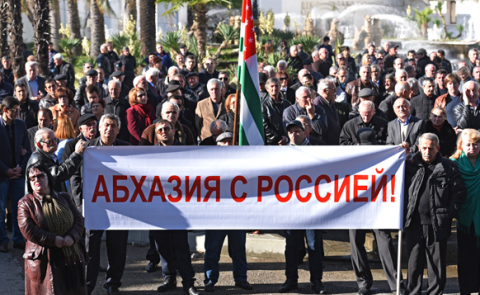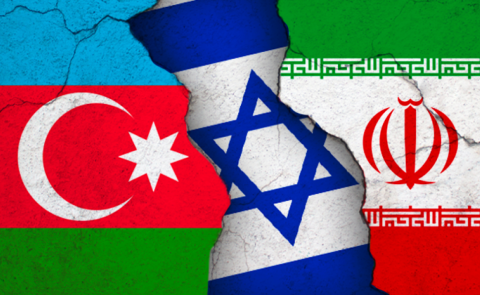
Forging Futures: The Potential for Deepened Relations Between Poland and Armenia Amidst European Union (EU) Dynamics
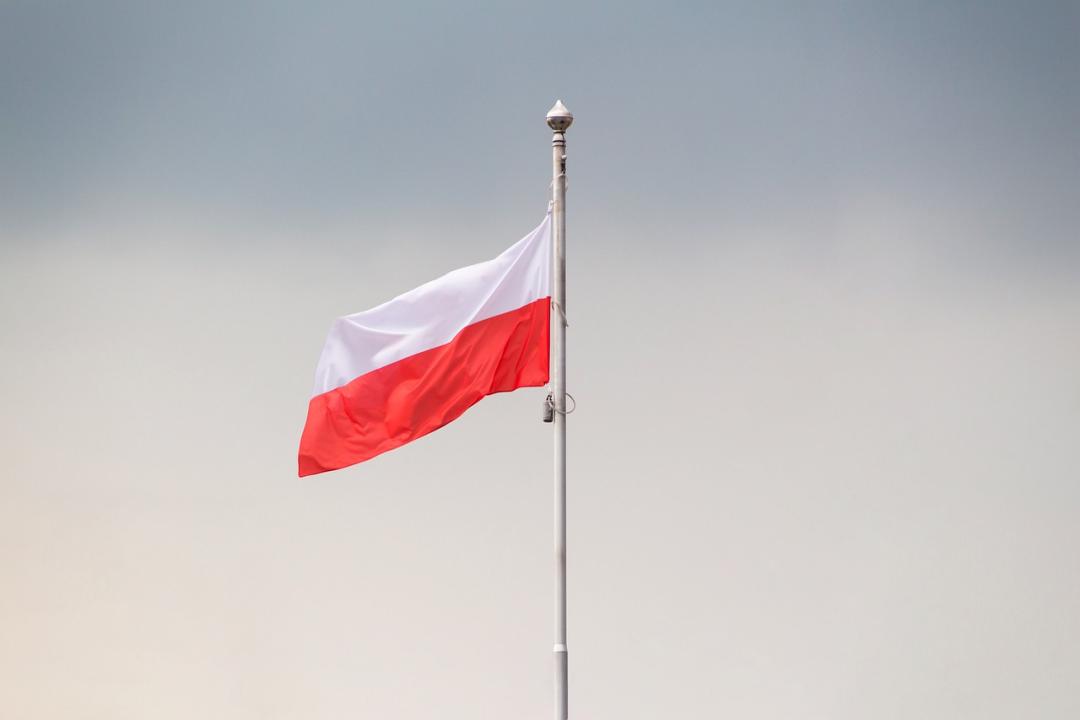
As Armenia moves towards deeper integration with the European Union, it stands at a pivotal moment in its diplomatic journey, and Poland may play a significant role in influencing Armenia's European aspirations. Following the Second Nagorno-Karabakh War transition and regional geopolitical complexities, Armenia is actively seeking to strengthen its bonds with the EU. This article explores the intricate dynamics surrounding Armenia's European ambitions, with a particular emphasis on the burgeoning collaboration between Armenia and Poland. It investigates notable developments, diplomatic overtures, and the potential ramifications of enhanced EU-Armenia relations, all within the context of the partnership between Poland and Armenia.
Armenia's European Aspirations: A Path to EU Membership?
As Armenia continues to navigate its diplomatic landscape, recent developments underscore its aspirations for deeper engagement with the European Union while signaling significant shifts in its approach to regional security dynamics, notably within the Collective Security Treaty Organization (CSTO) framework. Prime Minister Nikol Pashinyan's recent statements shed light on Armenia's recalibration of its foreign policy priorities and the pursuit of closer ties with the EU, alongside the complex considerations surrounding its CSTO membership. Prime Minister Pashinyan's decision to withdraw Armenia's involvement in the CSTO stems from the organization's inability to offer anticipated military aid during border clashes between Armenia and Azerbaijan in 2021 and 2022. Pashinyan's firm stance underscores Armenia's demand for clarity on security commitments within the CSTO framework and hints at the possibility of Armenia's withdrawal if grievances remain unaddressed.
In his address to the European Parliament, Prime Minister Pashinyan reiterated Armenia's readiness to enhance its partnership with the EU, contingent upon mutual understanding and alignment of interests. Emphasizing the depth and strength of current relations, Pashinyan highlighted Armenia's aspirations for negotiations on visa liberalization, preferential trade terms, and bolstered security cooperation, including the expansion of EU monitoring missions along the Armenian-Azerbaijani border. Endorsed by EU High Representative Josep Borrell, this move signifies the EU's proactive approach to bolstering regional stability, portraying it as an initial step towards enhanced Armenia-EU cooperation.
According to the Armenian Deputy Minister of Foreign Affairs, Mnatsakan Safaryan, “The Agreement extends to the EU mission in our country and its staff and is valid only in the territory of the Republic of Armenia. The activity of the mission is highlighted not only from the viewpoint of ensuring the stability of the eastern borders of Armenia but also from the viewpoint of the rapid processes of rapprochement of the EU-Armenia political relations,” the Deputy Minister underlined. His statement indicates that the competent institutions of the Republic of Armenia will regard the EU Mission in Armenia, including its personnel, divisions,headquarters, and components, as a diplomatic representation in matters pertaining to customsand taxes.
In assessing Armenia's evolving foreign policy landscape, it is imperative to consider expert perspectives that shed light on the geopolitical complexities at play. Wojciech Wojtasiewicz, an experienced analyst from the Polish Institute of International Affairs (PISM), is proficient in Eastern European affairs and provides valuable insights into Russia's potential reactions to Armenia's strategic realignment. Wojtasiewicz warns of Russia's strategic interests in the region, emphasizing the Kremlin's likely resistance to Armenia's attempts to pivot away from its sphere of influence. As an expert closely attuned to regional dynamics, Wojtasiewicz underscores thechallenges Armenia may face in navigating its diplomatic reorientation amidst Russian opposition. Highlighting the gravity of the situation, Wojtasiewicz asserts, "Russia will try to bring down Prime Minister Nikol Pashinyan and install a pro-Russian government." This assertion underscores Russia's vested interest in maintaining influence over Armenian politics and its readiness to intervene to safeguard its strategic objectives. Moreover, he cautions against potential confrontations as Armenia seeks to assert its newfound foreign policy direction.
Meanwhile, the partnership between Armenia and the EU is expected to intensify. Additionally, Armenia's Foreign Minister Ararat Mirzoyan's announcement of Armenia's consideration to join the EU reflects a bold step towards European integration. Against the backdrop of strained relations with Russia and the pursuit of closer ties with the West, Armenia's EU membership aspirations signal a strategic realignment and a commitment to democratic values and Western norms. Moreover, Mirzoyan's emphasis on expanding partnerships with the US and India underscores Armenia's broader geopolitical reorientation and quest for diversified alliances.
Amidst escalating tensions in the South Caucasus region, on April 5, the European Union unveiled a comprehensive plan to bolster Armenia's economy and foster closer ties with the EU. Following discussions between European Commission President Ursula von der Leyen, U.S.Secretary of State Antony Blinken, and Armenian Prime Minister Nikol Pashinyan, the EU has committed €270 million over four years to support Armenian businesses and industry. This landmark partnership agenda aims to strengthen Armenia's economy and society, with investments earmarked for electrification and renewable energy projects. Furthermore, the EU has lauded Armenia's democratic reforms and efforts to combat corruption, signaling a growing alignment of values and interests between the two parties.
Poland's Involvement in Armenia's European Integration Agenda
As Armenia charts its course towards deeper integration with the European Union, a pivotal aspect of its evolving foreign policy lies in strengthening ties with individual EU member states. In recent months, Armenia has sought new security cooperation alliances with India, as well as EU member states France, Greece, and Cyprus, in an effort to diversify its traditionally Russia-dependent security alignments in response to its uncertain security situation. A potential relationship of growing importance could be the emerging rapport between Poland and Armenia.
Poland’s geopolitical positioning as a bridge between Eastern and Western Europe positions it as a valuable ally for Armenia's European integration efforts. Moreover, Poland's historical experiences and democratic transition resonate with Armenia's own journey towards democratization and reform. The shared challenges and aspirations of both nations serve as a
solid foundation for fostering deeper political dialogue and cooperation. As Armenia navigates the complexities of its regional security landscape, including its relationship with the Collective Security Treaty Organization, Poland's perspective and support can offer valuable insights and strategic guidance.
"While Armenia may not currently hold a central position on Poland's foreign policy agenda, Elene Kintsurashvili, a Program Assistant at the German Marshall Fund’s Warsaw office, highlights Poland's broader commitment to promoting pro-European and transatlantic reforms in Eastern European nations. In an interview with CaucasusWatch, Kintsurashvili notes that Poland's latest Foreign Policy Strategy emphasizes its unwavering dedication to supporting such reforms, aiming to cultivate lasting stability in the region. Despite Armenia's secondary status in Poland's foreign policy priorities, Warsaw has led various initiatives, extending financial and logistical assistance to Eastern European countries on a selective basis."
Diplomatic Gestures and Humanitarian Aid
The diplomatic relations between Poland and Armenia, established on February 26, 1992, have traversed a path of gradual development and mutual engagement. Following Poland's accession to the European Union, there was a noticeable deepening of engagement. For example, President Robert Kocharyan's visit in 2004 to Warsaw led to agreements on combating organized crime and enhancing economic ties. After the Law and Justice party took power in 2005, there was a heightened focus on the Southern Caucasus in Polish foreign policy. Subsequent visits and discussions, such as Foreign Minister Anna Fotyga's trip to Yerevan in 2007, emphasized mutual interests in energy security and regional stability. (A. Miarka & J. Łapaj-Kucharska, 2022)
Following the Velvet Revolution in Yerevan in 2018, the first meeting between Polish and Armenian representatives occurred in May 2019 during the Polish-Armenian political consultations in Warsaw. Marcin Przydacz, Deputy Head of the Polish Ministry of Foreign Affairs, held discussions with Avet Adonc, Deputy Head of Armenia's diplomacy. Przydaczreiterated Poland's support for Armenia's ongoing changes and readiness to assist in modernization efforts. The dialogue covered various aspects of bilateral relations, development cooperation, security policies in the South Caucasus region, and Armenia's relations with the European Union.
As for Poland's stance on the Nagorno-Karabakh conflict, its diplomatic approach to the Armenia-Azerbaijan situation has been marked by advocating for a peaceful resolution and prioritizing dialogue over discord. According to Kintsurashvili, while Warsaw has actively encouraged Armenia and Azerbaijan to de-escalate tensions and resume dialogue, particularly during its presidency of the OSCE in 2022, Yerevan has not consistently signaled openness to Polish mediation efforts. While Poland, further solidifying its supportive role, dispatched 3 tons of humanitarian aid to Armenia in April 2021, aiding the displaced citizens ofNagorno-Karabakh. This gesture of goodwill underscores Poland's humanitarian commitment and highlights the potential for broader collaboration in crisis response and management. In collaboration with the Chancellery of the Prime Minister, the Government Agency for Strategic Reserves, and the Minister of National Defense, the Ministry of Foreign Affairs expeditiously distributed assistance consisting of two hundred camp cots and linens, in addition to ten tons of food. Furthermore, Polish diplomacy contributed USD 200,000 towards the aid of Armenian refugees born in Nagorno-Karabakh, in response to a request from the UNHCR office in Yerevan.
Economic Ties: Opportunities and Challenges
Despite the establishment of diplomatic relations over three decades ago, economic cooperation between Poland and Armenia remains modest. The Russia-led Eurasian Economic Union (EAEU) is Armenia's top export destination, surpassing trade with both the EU and the United States combined. This is particularly pertinent given Armenia's role as a re-export hub as a result of the West's sanctions posture against Russia. Amidst this backdrop, trade with Russia, Belarus, and Ukraine has seen notable increases. In particular, Armenia’s exports to Russia tripled in 2022 and then doubled between January and August 2023. Belarus and Ukraine also experienced significant growth, with trade volumes amounting to $136.6 million (a rise of 27.1%) and $61.5 million (an increase of 18.1%), respectively. In total, major trading partners such as Russia recorded transactions exceeding $4.1 billion (a surge of 56.3% compared to the first eight months of 2022), Belarus ($136.6 million, up by 27.1%), and Ukraine ($61.5 million, up by 18.1%).
Meanwhile, Armenia's trade relations with EU countries also experienced a notable expansion, with trade volume reaching approximately $1.9 billion, marking a substantial 36.7% increase. Notably, trade with Germany surged by 57.4% to $447.7 million, followed by Italy ($285.2 million, up 39.5%), the Netherlands ($248.9 million, up 41.4%), and Poland ($126.9 million, up 2.4 times). There's even more potential for Armenian products to thrive in the expansive Polish market, thanks in part to Poland's significant economy and the existing familiarity of Polish consumers with Armenian products and culture. While transitioning to meet "high European standards" post-EAEU membership presents a long-term and formidable challenge, Poland serves as an attractive initial step. Despite linguistic differences, the Polish language may be relatively comprehensible for Armenian businessmen, facilitating smoother communication and trade interactions.
In 2018, Poland ranked as Armenia's 25th trade partner, accounting for only 0.71% of Armenia's total trade turnover. The economic payments between the two states demonstrate a trade imbalance in Poland's favor. The primary Polish investment in Armenia, "Lubawa-Armenia," operational since 2014, exemplifies the limited yet potential-laden economic engagement. This enterprise, specializing in the manufacture of military and protective equipment, underscores the possibilities for deeper industrial cooperation and trade diversification.
An important place in the trade exchange is the Polish exports to Armenia of chemical products, e.g., foil, glycerol, medicines, and cosmetics. The basic goods exported from Poland to Armenia in the last three years include the products of the electro-mechanical industry as well as the chemical industry, produce, and food. Metallurgical products, as well as produce and food, constitute the majority of products imported from Armenia. (A. Miarka & J. Łapaj-Kucharska, 2022)
As proposed by Elene Kintsurashvili, to enhance bilateral trade and investment ties between Poland and Armenia, both countries can consider the following:
1. Deepening Economic Cooperation: Both nations can continue their commitment to the Agreement on Economic Cooperation and leverage platforms like the Polish-Armenian Intergovernmental Commission for Economic Cooperation to facilitate deeper economic ties.
2. Promoting Investment: Despite Poland's limited investment in Armenia currently, both countries should actively promote investment opportunities in their respective business communities to encourage mutual investment.
3. Strengthening Trade Routes: Given Armenia's rich resources in metal ores, efforts to strengthen trade routes and improve logistics infrastructure can facilitate increased trade in metal products and other goods between the two countries.
4. Tourism: Collaborative efforts to promote Armenia as a tourist destination can be beneficial for both countries, fostering tourism exchanges and economic growth in the sector.
Shared Histories and Mutual Recognition
There are no trustworthy estimates concerning Armenians in Poland, and the number considered varies from 6,000 to 12,000. However, a small but well-established and assimilated old Armenian diaspora has been in Poland for centuries, contributing to the flow of migrants from Armenia that occurred after 1989. (K. Iglicka, 2008) It is noteworthy to mention that Poland was among the first nations to recognize Armenia's independence.
A poignant aspect of the Poland-Armenia relationship is the mutual acknowledgment of historical sufferings. Poland's recognition of the Armenian genocide is a significant gesture of solidarity, offering a foundation for cultural and historical understanding between the two nations. Additionally, their shared membership in international organizations such as the OSCE, the Council of Europe, the World Trade Organization, and the United Nations provides a multilateral platform for collaboration and dialogue.
Nonetheless, Poland lacks a pragmatic approach and a coherent policy framework with regard to the nations of the South Caucasus. Various factors contribute to this situation, such as the lack of a well-established Polish brand in these nations' perceptions, Poland's limited ability to exert influence over geographically distant countries, and constraints in terms of human resources, finances, and legal capabilities. (A. Miarka & J. Łapaj-Kucharska, 2022) Two key dynamics shape Poland's relations with Armenia: the EU-NATO-Russian Federation trialogue and the Poland-Russian Federation dialogue. The effectiveness of Poland's Eastern policy hinges on its ability to engage in and shape these dynamics.
Although problematic relations between Yerevan and Moscow could increase Polish engagement with Armenia, ties with Russia remain significantly stronger than those with Poland. The limitations in Polish policy towards Armenia and other South Caucasus nations stem, in part, from a lack of a comprehensive strategy. It's crucial for Poland to define its national interests in the region, particularly in areas such as democratization, security, and the economy. Addressing these challenges and incorporating the differences between countries into foreign policy objectives is critical for fostering stronger relations with Armenia and other South Caucasus nations.
Towards a Strategic Partnership
In 2010, Poland recognized migration as a crucial component of European policy, aimed at upholding stringent standards of public security and fostering effective integration policies. Collaborative efforts have been observed in migration management, with joint projects aimed at enhancing Armenia's systems and aligning them with European standards. Significant strides, including a seminar on cooperation between Poland's and Armenia's migration services, signaled a deeper engagement between the two nations in 2012, leading up to the Vilnius Eastern Partnership Summit. The project was part of Armenia's action plan under the European Neighbourhood Policy, as well as a Polish contribution to EU-Armenia mobility. (Legucka, 2011, No. 398–415).
While Polish-Armenian relations have faced hurdles in the past, those developments have pointed in a positive direction. A notable instance of such challenges arose during the fourth Eastern Partnership Summit in Riga in 2015, where differing views on the Ukrainian conflict became evident. Similar to Belarus, Armenia opted not to endorse a declaration condemning Russia's annexation of Crimea, indicating varying stances between Poland and Armenia on this matter.
It is noteworthy that Poland's successful partnership with Georgia, particularly in supporting its Euro-Atlantic integration, offers a blueprint for Armenia. Poland's affiliations with both NATO and the EU have effectively distanced it from the Kremlin's sphere of influence, with ambitious plans to develop the strongest land army in Europe by 2026. (E., Kintsurashvili) As Armenia seeks to distance itself from Russian influence and forge a closer relationship with the European Union, Poland's experience and support could prove invaluable. Poland's advocacy for EU expansion and its commitment to supporting the Eastern Partnership present an opportunity for Armenia to leverage this partnership in its European integration endeavors.
It was chiefly Poland and Sweden that initiated the EaP as a structured policy to support regional cooperation and facilitate closer relations between the EU and Eastern European partners. Presented at the European Council summit in June 2008, the initiative met with support from the European Commission and EU Member States. If Armenia's aspirations for closer relations with the EU prove to be sustainable and aim for association with the EU and, in the future, full membership in the organization, Armenia will be able to benefit from Poland's accession experience.
Wojciech Wojtasiewicz also highlights Poland's potential role in supporting Armenia's aspirations for closer ties with the European Union. Poland's experience with EU accession could offer Armenia valuable guidance as it navigates its integration path. Additionally, Wojtasiewicz emphasizes Poland's readiness to assist Armenia in implementing crucial reforms, particularly in areas like public administration. Moreover, during its presidency of the Council of the EU (first half of 2025), Poland is going to stimulate the debate about the future of the EaP in order to better define its role in a new geopolitical situation.
Conclusion
In the near future, active discourse will also surround NATO integration as an element of Armenian politics, particularly in light of the Nagorno-Karabakh conflict resolution and Iran's stand on military alliance. "The situation in the region remains in their area of interest," emphasized Wojtasiewicz, referring to recent events such as NATO Secretary Jens Stoltenberg's visit and the bolstering of EU-Armenia relations, including discussions on potential visa-free negotiations and EU membership candidacy. Stoltenberg's visit to Yerevan marked his first as secretary-general, a position he has held for a decade. He commended Pashinyan's pursuit of a more independent foreign policy and expressed optimism for the rapid development of a tailored partnership program with Armenia.
However, Stoltenberg acknowledges the region's ongoing challenges, stressing Armenia's efforts to assert its position against Russia and Azerbaijan, notably in relation to the proposed Zangezur Corridor project, which it opposes with its own alternative Crossroads of Peace. “Türkiye and Azerbaijan's goal in the near term will be to force Armenia to agree to the opening of the so-called Zangezur transport corridor, connecting Azerbaijan proper with its exclave Nakhichevan and Türkiye, and more broadly, the SouthCaucasus region with China and Central Asia on the one hand and Europe on the other. Armenia agrees to unblock transport routes in the region but opposes their extraterritoriality,” noted Wojtasiewicz.
Wojtasiewicz also highlights the uncertainty surrounding the future geopolitical landscape of the South Caucasus region, emphasizing that the ongoing political changes represent the most significant transformation in over three decades. It is crucial for Polish authorities to adopt a proactive and pragmatic approach towards Armenia in order to facilitate the country's integration into European institutions. However, Warsaw's capabilities in this regard are limited. Thus, building an infrastructure connecting the European Union with the Caspian Sea region without going through Russian territory is an important task. For this reason, it seems necessary to bring all three South Caucasus countries closer to the European Union by strengthening their sovereignty and supporting systemic transformation, including the process of economizing mutual relations.
At present, Armenia stands as the sole South Caucasus state among three to have expedited its trajectory towards European Union integration to the degree that it may soon surpass the progress made by Georgia. As Armenia advances in its pursuit of enhanced integration with the European Union, Poland assumes a pivotal role as a collaborator in influencing its ambitions in Europe. The increasing partnership between the two countries represents a potentially fruitful path towards promoting political discourse and cooperation.
The essential role that Poland plays in connecting Eastern and Western Europe provides Armenia with significant advantages and guidance in its endeavors to integrate into the European Union. Notwithstanding economic obstacles, the reciprocal dedication to enhancing trade and investment collaboration offers prospects for more profound involvement. In simpler terms, the potential for Poland to serve as a supportive ally to Armenia in furthering its European agenda is substantial. By uniting, Armenia and Poland can effectively oppose the region's complexities while striving for mutual goals of stability, prosperity, and improved relations with the European Union.
About author: Muraz Safoev is a contributor for Caucasus Watch based in Tbilisi.
See Also

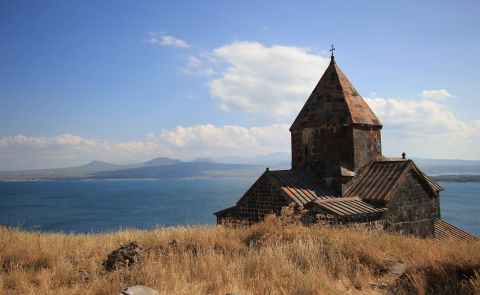
From Neorealism to Neoliberalism: Armenia’s Strategic Pivot in Foreign Policy After the Nagorno-Karabakh Conflict
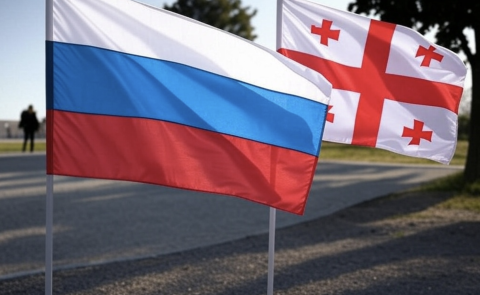
Georgia and Russia: New Turn in Bilateral Relations
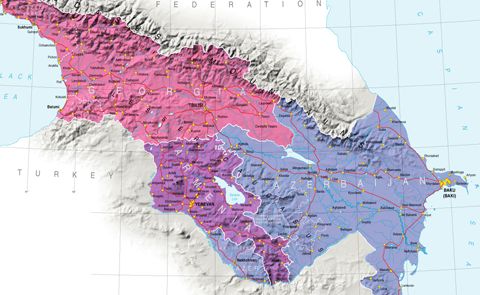
3+3 Initiative as a New Order in the South Caucasus
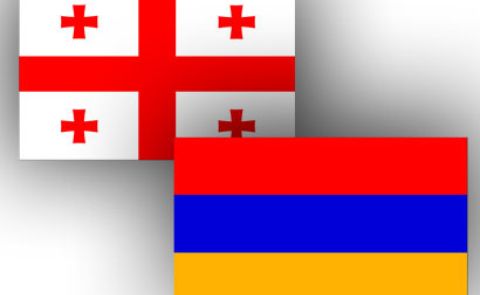
Economic Cooperation Between Armenia and Georgia: Potential and Challenges Ahead
